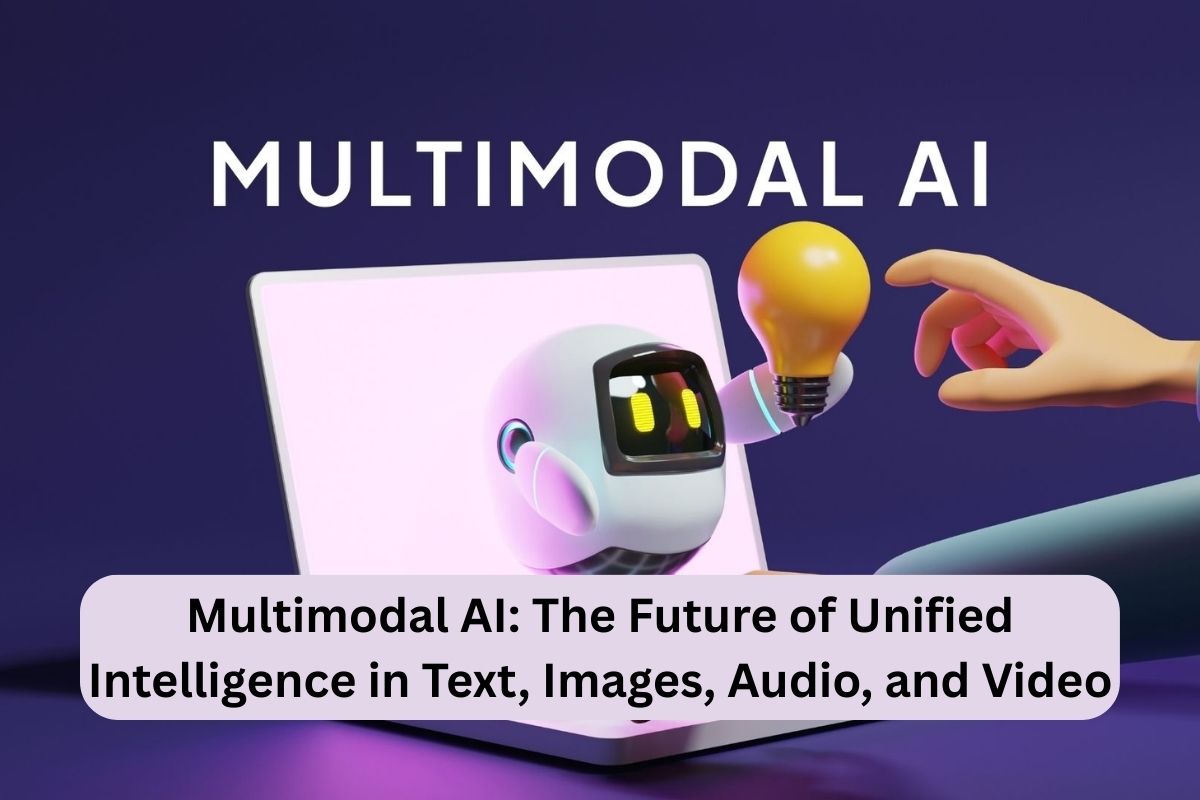Artificial Intelligence has made remarkable progress in understanding text, recognizing images, and even generating human-like speech. But until recently, most AI systems specialized in just one type of data. That’s where multimodal AI comes in—a breakthrough approach that combines text, images, audio, and video in a single unified system. This evolution is opening the door to smarter, more versatile AI tools that can understand the world the way humans do.
What is Multimodal AI?
Multimodal AI refers to systems designed to process and integrate multiple types of data simultaneously. Unlike traditional models that only analyze text or images separately, multimodal systems combine information from different formats to provide richer insights. For example, such a system could watch a video, listen to the dialogue, read subtitles, and understand the scene holistically—something far beyond what single-modal AI can achieve.
Why Multimodal AI Matters
The real world isn’t made of just words or pictures—it’s a mix of sounds, visuals, and language. Multimodal AI mimics human perception by bringing these different modes together. This allows for more natural interactions with technology, whether it’s improving healthcare diagnostics, enhancing customer experiences, or making virtual assistants more intelligent and human-like.
Multimodal AI vs Traditional AI
| Feature | Traditional AI (Single-Modal) | Multimodal AI |
|---|---|---|
| Data Type | Handles one type (text, image, or audio) | Combines text, image, audio, and video |
| Understanding | Limited to one perspective | Holistic, context-aware understanding |
| Applications | Chatbots, image recognition, voice search | Smart assistants, medical imaging, AR/VR |
| User Interaction | Less natural, task-specific | More human-like and flexible |
| Future Potential | Incremental improvements | Transformative across industries |
Real-World Applications of Multimodal AI
- Healthcare: Analyzing patient reports, medical images, and speech to support accurate diagnoses.
- Education: Creating interactive learning tools that integrate visuals, voice, and text.
- Customer Service: AI assistants that can understand emails, audio calls, and product images together.
- Entertainment: Systems that generate video clips from text prompts or summarize long videos with captions.
- Accessibility: Helping visually impaired users by describing images and videos with context.
Benefits of Multimodal AI
- Provides deeper, context-rich insights
- Improves human-AI interaction
- Bridges communication gaps across formats
- Enables more powerful and versatile applications
- Unlocks innovation in industries like retail, gaming, and media
Challenges of Multimodal AI
While powerful, multimodal AI also faces hurdles. Training these models requires massive datasets across different formats, raising concerns about bias and accuracy. There are also technical challenges in aligning different data types and ensuring real-time performance. Ethical considerations, such as misuse in deepfakes or privacy violations, remain a key concern for researchers and policymakers.
The Future of Multimodal AI
As technology advances, multimodal AI will become central to the next generation of smart systems. From virtual reality to advanced medical tools, we will see AI that doesn’t just respond to a command but understands context across multiple layers of input. This could redefine how humans interact with machines, making technology more intuitive, efficient, and human-like.
Multimodal AI represents a leap forward in artificial intelligence by unifying text, images, audio, and video into one intelligent system. Unlike traditional AI, it can interpret the world in richer, more natural ways, unlocking endless possibilities across industries. As this technology matures, it promises to reshape how we communicate, work, and live in the digital age.
FAQs on Multimodal AI
1. What makes multimodal AI different from traditional AI?
Multimodal AI can process text, images, audio, and video together, while traditional AI works with one type of data at a time.
2. Where is multimodal AI being used today?
It’s being applied in healthcare, customer service, education, entertainment, and accessibility tools.
3. What are the main benefits of multimodal AI?
It delivers deeper insights, improves user interaction, and creates more versatile applications across industries.
4. Are there risks with multimodal AI?
Yes. Risks include bias in data, potential misuse in deepfakes, privacy issues, and technical challenges in managing large datasets.
5. Will multimodal AI replace traditional AI systems?
Not entirely. Traditional AI will still serve simple tasks, but multimodal AI will dominate complex, context-rich applications in the future.
